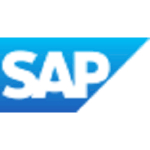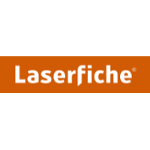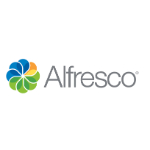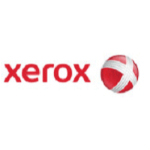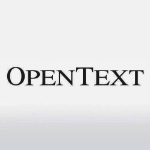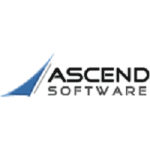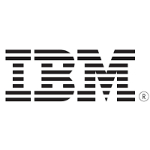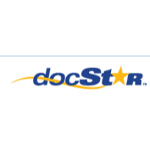List of Best Enterprise Content Management Software
Showing 10 of 53 productsWordable, the game-changing software that streamlines your writing process. Simplify and speed up your content creation with Wordables seamless integration with your favorite writing platforms, effortlessly transferring your drafts from Google Docs t...Read Wordable Reviews
OnBase ECM is a software solution that enables organizations to efficiently manage and streamline their content, processes, and data. With a user-friendly interface features, OnBase ECM helps businesses achieve greater efficiency and productivity, ma...Read OnBase ECM Reviews
SAP ECM is a premier enterprise content management solution designed to streamline and optimize business processes. With its advanced features interface, SAP ECM empowers organizations to efficiently manage their content, increase productivity, and d...Read SAP ECM Reviews
Laserfiche ECM: Unlock the full potential of your documents with this cutting-edge software. From storage and organization to seamless collaboration and secure digital forms, Laserfiche ECM streamlines your document management process for optimal eff...Read Laserfiche ECM Reviews
Alfresco ECM is a content management system that simplifies the way businesses organize, access, and collaborate on their digital assets. With its advanced features and seamless integration, Alfresco ECM allows for efficient and streamlined workflows...Read Alfresco ECM Reviews
OpenText is the leading global provider of Enterprise Information Management (EIM) software solutions that enable businesses to digitize and manage their information, from creation to archiving and everything in between. With a wide range of products...Read OpenText Reviews
Ascend ECM Ascend ECM, is a solution for managing your organizations digital content. With streamlined processes and customizable features, Ascend ECM is designed to simplify document management and enhance productivity. Say goodbye to manual, paper-...Read Ascend ECM Reviews
IBM ECM, a versatile enterprise content management tool designed to streamline processes and maximize efficiency for businesses of all sizes. With advanced features and a user-friendly interface, IBM ECM offers a seamless solution for organizing, sec...Read IBM ECM Reviews
DocStar is a software designed to elevate your businesss efficiency and productivity. With its innovative features and user-friendly interface, DocStar simplifies document management, allowing you to streamline your workflow and focus on what matters...Read docStar Reviews
- What Is Enterprise Content Management Software?
- Top Reasons Why Businesses Need Enterprise Content Management Software?
- What Are the Top Key Features of Enterprise Content Management Software?
- What Are the Top Benefits of Enterprise Content Management Software?
- What Are the Steps to Choose the Right Enterprise Content Management Software?
- What Are the Types of Enterprise Content Management Software for Different Industries?
- What Are the Technology Trends for Best Enterprise Content Management Software?
- What Are the Deployment Options for Enterprise Content Management Software?
What Is Enterprise Content Management Software?
Enterprise content management (ECM) software refers to a specific category of software that has been developed with the purpose of assisting businesses in the systematic gathering, administration, storage, dissemination, and retrieval of their content over a network of users that possess varying degrees of access.
The top ecm software encompasses several functionalities aimed at facilitating the monitoring of papers, files, websites, and other content sources within an organization. The objective of enterprise content management tools is to establish a streamlined and regulated procedure for the acquisition, storage, administration, and preservation of organizational material throughout its lifecycle.
The best enterprise content management software streamlines the procedures involved in gathering, overseeing, and structuring digital content. For instance, the utilization of top enterprise content management systems technology enables the scanning of documents, their storage and indexing, the establishment of an audit trail, the enforcement of retention policies, and the facilitation of cooperation among users across the whole company.
Enterprise content management tools play a crucial role in assisting firms in the elimination of duplicate material and facilitating enhanced control over the integrity of organizational data. Additionally, these technologies streamline processes such as document retrieval, library setup, and information system management.
Enterprise content management Software plays a crucial role in facilitating the maintenance and management of extensive volumes of digital content within enterprises. The automation of content gathering, management, and dissemination within an enterprise facilitates the preservation of content and enhances its accessibility for authorized users.
Top Reasons Why Businesses Need Enterprise Content Management Software?
1. Organizational Awareness: The use of an the top enterprise content management software facilitates comprehensive comprehension of various facets of a business's activities, hence enabling the organization to make more judicious and well-informed decisions.
2. Resource Optimization: The utilization of enterprise content management software facilitates the enhancement of resource allocation inside a company entity through the provision of insights derived from data analysis.
Additionally, it offers improved visibility into document versions and storage necessities.
3. Optimizing Search Result Relevancy: The best enterprise content management system facilitates the expeditious retrieval of pertinent information in response to a specific inquiry by employees.
4. Automation of Repetitive Processes: Enterprise content management tools facilitate the automation of diverse processes through the optimization of document-centric process management.
5. Compliance and Regulations: Enterprise content management ECM software offer a highly effective and streamlined approach to effectively handle and address compliance and regulatory obligations.
6. Secure Document Storage: The utilization of enterprise content management software provides enterprises with enhanced file storage security in comparison to other options, hence contributing to safeguarding the company from potential cyber attacks.
7. Effective Auditing: The best enterprise content management software offers a proficient means of conducting audits on the utilization of documents and material inside an organizational setting.
8. Reducing Human Error: The best ECM software plays a crucial role in mitigating human errors associated with the management and handling of enormous quantities of documents and material.
9. Collaborative Documents: Enterprise content management (ECM) systems offer a streamlined and secure means of generating and disseminating documents and material.
10. Task Automation: The top ecm softwarehave the capability to streamline many operational activities, including automating processes such as data entry and document retrieval.
11. Customized Workflows: Enterprise content management software solutions offer the capability to tailor workflows according to specific requirements, thereby ensuring the proper and secure routing of all documents.
12. Risk Management: Enterprise content management ECM software play a crucial role in assisting enterprises in the identification and mitigation of issues related to document management.
13. Consolidation of Files: Enterprise content management tools have the capability to centralize a vast quantity of data and documents, hence facilitating convenient access and efficient searchability.
14. Archive and Retention: The best ECM software facilitate the archival and preservation of documents within a highly secure repository, thereby empowering enterprises to effectively manage their information assets.
15. Audit Logging: Enterprise content management software facilitates the ability of enterprises to monitor and manage document versions, while also enhancing audit logging through the tracking of user activities.
What Are the Top Key Features of Enterprise Content Management Software?
1. Automated File Distribution: The best ECM software enables enterprises to establish automated protocols for the categorization, arrangement, and dissemination of information to relevant individuals across different departments.
2. Version Control and Tracking: The top enterprise content management software solutions encompass a version tracking functionality, which enables enterprises to effectively monitor and trace all iterations of a file during its entire lifespan.
3. Workflow Engines: Enterprise content management software let users to establish automated workflows for the generation, distribution, endorsement, and preservation of digital material.
4. Digital Rights Management: Security features enable companies to exercise control over the individuals who are granted access to content, as well as the specific time periods and locations in which such access is permitted.
5. Audit Logging: Enterprise content management ECM software are equipped with audit logging functionalities that enable the monitoring and recording of activities such as file creation, deletion, and change.
6. Integrated Search and Retrieval: Enterprise content management tools provide advanced search and retrieval functionalities, incorporating filters, keywords, and various criteria to expedite the identification of files based on several factors.
7. Centralized Collaboration: The best enterprise content management software facilitate efficient and secure material sharing, access, and collaboration among teams through a single platform.
8. Document Imagining and Capture: The best enterprise content management system facilitate efficient and secure material sharing, access, and collaboration among teams through a single platform.
9. Content Analytics and Reporting: The top ecm software encompass sophisticated analytics and reporting capabilities that facilitate the acquisition of valuable insights pertaining to consumption patterns on content.
10. Mobile Access: Enterprise content management software provide users the capability to conveniently retrieve and interact with digital content using their mobile devices, regardless of their geographical location.
What Are the Top Benefits of Enterprise Content Management Software?
1. Improved Efficiency: The best ECM software offers a mechanized framework for the acquisition, administration, and retrieval of content within an organizational setting.
The top enterprise content management systems technology enhances operational efficiency and minimizes the need for manual labor in the creation, management, and storage of material.
2. Reduced Costs: Enterprise content management software has the potential to decrease expenses related to the administration, storage, and organization of data by implementing automated processes.
3. Increased Uptime: Organizations can enhance their operational continuity and minimize content accessibility latency by using a proficient and dependable data storage, management, and retrieval system.
4. Security: Enterprise content management tools play a crucial role in enhancing data security by effectively storing information, hence minimizing the risk of unauthorized access or compromise of sensitive content.
5. Improved Data Quality: Enterprise content management systems have the capacity to enhance the accuracy and efficiency of information storage, thereby contributing to the enhancement of data quality and the maintenance of data currency.
6. Faster Research and Reporting: The best enterprise content management software facilitate the efficient storage, retrieval, administration, and monitoring of content for users. Top enterprise content management systems technology enhances the speed and efficiency of research and reporting.
7. Collaboration: Enterprise content management software facilitates enhanced collaboration and data sharing across multiple users.
8. Compliance: Enterprise content management systems can assist firms in maintaining compliance with pertinent industry and regulatory standards.
What Are the Steps to Choose the Right Enterprise Content Management Software?
1. Define Your Enterprise Content Management Needs: Initiate the procedure by discerning and delineating the content management requirements of your firm. This should encompass the examination of the content utilized by your firm and its underlying objectives.
It is imperative to contemplate inquiries encompassing the aspects of what, where, when, why, and how in relation to the purpose and intended application of this content, as well as the specific context in which it will be situated.
2. Identify Features and Functionalities: After determining the enterprise content management (ECM) needs and requirements, it is essential to compile a comprehensive inventory of features and functions that the intended system must provide in order to fulfill those demands.
The top enterprise content management systems entail the range of documents, including different forms and types, that necessitate storage, as well as the manner in which access to these documents is required, the individuals who require access, and the specific processes and workflows involved.
3. Research Potential Alternatives: Conduct a comprehensive investigation of prospective solutions that possess the capacity to fulfill the identified needs. Please observe and evaluate the characteristics and capabilities of the ECM software being provided, and determine whether they align with or surpass your specific needs and criteria.
It is imperative to select software that is specifically engineered to facilitate the storage of content that aligns with the requirements of your organization.
4. Ask For Referrals: Inquire with individuals who have already installed business content management solutions, whether they are clients or colleagues, regarding their experiences and the level of user satisfaction they have encountered with their chosen software alternatives.
5. Determine a Budget: After the process of narrowing down your selections to a limited number, it is important to determine the financial resources that can be allocated towards an enterprise content management system.
Conduct a thorough examination of the many pricing plans offered by each option to ascertain which one is most suitable for meeting your requirements while staying within your financial constraints.
6. Test The Software: Enterprise content management ECM software is advisable to request a demonstration or trial time from the prospective providers. The top enterprise content management systems provide an opportunity for users to evaluate the program and ascertain its compatibility with their company needs, as well as to verify that it fulfills all necessary requirements.
7. Make An Informed Decision: Upon the conclusion of the trial period, the best ECM software is advisable to carefully evaluate the advantages and disadvantages associated with each available solution. When making a decision, it is important to take into account several factors such as individual needs, preferences, budgetary constraints, desired features, and the quality of customer support.
By carefully considering these criteria, one can select the program that aligns most effectively with their requirements.
What Are the Types of Enterprise Content Management Software for Different Industries?
The diversity of Enterprise Content Management (ECM) software types is contingent upon the specific industry in which they are employed.
1. Financial services and banking: The provision of financial services and banking necessitates the implementation of a robust and secure system that effectively oversees and manages digital assets, including but not limited to customer data, financial papers, and other forms of highly sensitive information.
In this particular scenario, the utilization of software tools such as workflow management applications, document management systems (DMSs), and finance process management systems becomes imperative in order to guarantee adherence to industry requirements.
2. Healthcare: Healthcare organizations necessitate enterprise content software solutions capable of effectively indexing and managing medical and health records, monitoring healthcare results, and retrieving data from the Electronic Health Records (EHR) system.
Healthcare-specific software within the enterprise content management (ECM) domain encompasses several applications such as medication administration software, Disease Management Software, Patient Portal Software, and interoperability software designed for medical coding.
3. Government: Government entities require sophisticated enterprise content software capable of effectively handling many types of information, including confidential papers, public records, and archival materials.
Enterprise content management (ECM) solutions within this particular industry encompass a range of technologies, such as records management systems, document imaging systems, knowledge management systems, and data analytics.
4. Education: The education sector necessitates a comprehensive system capable of effectively managing student records, coursework, and assessment data. The best enterprise content management system solutions within this particular business encompass a range of software applications, such as Student Information Systems (SIS), Learning Management Systems (LMS), and integrated curriculum management software.
5. Manufacturing: Manufacturing enterprises necessitate the utilization of enterprise content software capable of effectively overseeing supply chains, documenting designs, and managing the manufacturing process.
Common enterprise content management (ECM) solutions within this industry encompass software for product lifecycle management, production management, and 3D modeling.
6. Retail: Retail enterprises require an the best ECM software capable of effectively overseeing customer data, and digital resources such as promotional images and videos, and adhering to industry regulations and standards. Commonly employed solutions within the retail industry encompass the utilization of billing and invoicing software, customer relationship management (CRM) software, and order management software.
What Are the Technology Trends for Best Enterprise Content Management Software?
1. Increased Automation: The growing prevalence of automation in content management software has emerged as a prominent trend, enabling organizations to effectively streamline their operations and optimize resource allocation. Automation offers organizations the capability to swiftly locate, implement, and oversee information, leading to enhanced operational efficiency and cost-effectiveness.
2. Integrations: The prevalence of technological advancements has led to a growing trend of incorporating many software platforms, such as customer relationship management (CRM) systems, cloud storage, and automation tools, into content management software.
This facilitates the optimization of organizational procedures and enhances team members' collaborative efforts.
3. Cloud-Based Solutions: The utilization of cloud-based solutions is increasingly gaining traction within the realm of enterprise content management software. These solutions enable businesses to conveniently access their content from any geographical location, while also providing a secure means to store and exchange content.
4. Mobility: One other technical development is to the utilization of mobile devices for the purpose of accessing enterprise content. There is a growing recognition among organizations regarding the significance of mobile access, given the increasing number of employees utilizing smartphones and tablets for the purpose of maintaining connectivity.
In order to ensure that authorized personnel have access to the required content, it is imperative for content management software to possess the capability to accommodate mobile devices.
5. Analytics and Insights: The significance of analytics and insights is growing in prominence within the realm of content management software. There is a growing recognition among businesses regarding the significance of tracking and analyzing user activity.
Consequently, the best enterprise content management system is required to possess the capability to furnish these insights, as it plays a crucial role in optimizing content engagement.
What Are the Deployment Options for Enterprise Content Management Software?
The available deployment methods for Enterprise content management (ECM) software are contingent upon the specific product acquired and the unique requirements of the organization. In the realm of enterprise content software, it is commonly observed that there are three distinct alternatives for implementation.
1. On-premise deployment: The enterprise content management (ECM) software is deployed on the organization's proprietary computer systems and servers, thereby placing the onus of maintenance and security squarely on the organization itself.
2. Cloud-based deployment: Enterprise content management (ECM) software is entrusted to a third-party supplier who assumes responsibility for its hosting, management, and maintenance on a cloud-based platform. The data stored in the cloud is securely accessible by the company utilizing the software.
3. Hybrid deployment: The ECM software is characterized by a hybrid architecture, wherein it is deployed across both local physical infrastructure and cloud-based servers. This alternative provides enterprises with the opportunity to leverage the cost efficiencies of cloud-based implementations while retaining control over specific elements of the program.


